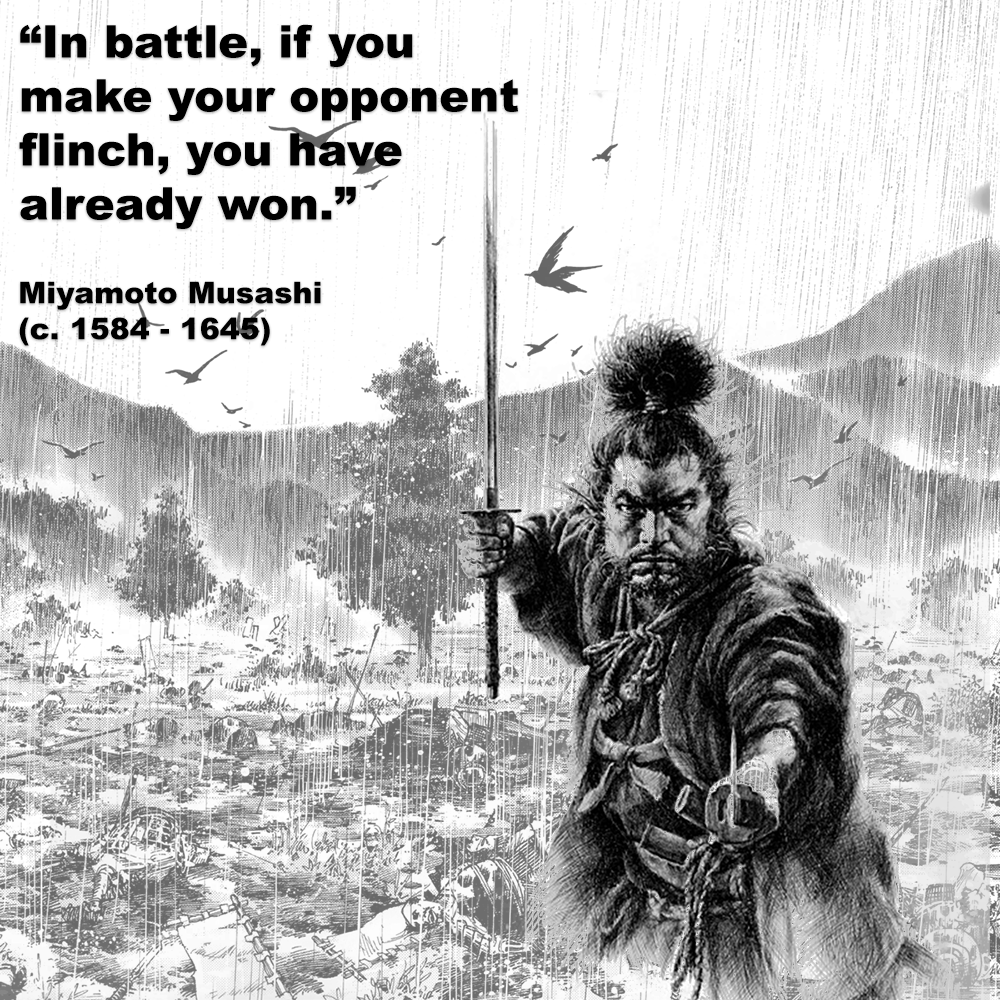
“In battle, if you make your opponent flinch, you have already won.” - Miyamoto Musashi (c. 1584 - 1645)
Posted by ADAM CARTER on MAR 21, 2023

“In battle, if you make your opponent flinch, you have already won.” - Miyamoto Musashi (c. 1584 - 1645)
The flinch response is a natural and innate reaction that occurs when we perceive a sudden threat or danger. In the context of martial arts, the flinch response is an important physiological mechanism that can be used to protect the body from harm. When training in the martial arts, it is essential to understand how the flinch response works and how to use it effectively.
The flinch response can be used to avoid, or deflect incoming attacks. For example, if an opponent throws a punch at us, our natural instinct is to flinch which can be used to evade or move out of the way.
Action is always faster than reaction, even when you’re anticipating it, and this couldn't be more true than when applied to a real self-defense scenario.
If you are caught by surprise, then by the time you SEE the strike coming, you've barely begun to realize what’s happening. You're most likely NOT going to be able to block a punch, at least not in the way ‘blocks’ are traditionally taught.
By training your body to react quickly and instinctively, you can use the flinch response to your advantage, effectively dodging, evading or receiving an incoming attack.
Another important aspect of the flinch response is learning how to control it. While the flinch response is a natural and important survival mechanism, it can also be detrimental to your performance if you are unable to control it. For example, if you flinch in response to a feint or fake attack, your opponent may be able to take advantage of your reaction and land a blow themselves.
The flinch response is also closely linked to your emotions. When you experience fear or anxiety, your body responds by producing adrenaline, which triggers the fight or flight response. This response can cause you to flinch, even in situations where there is no immediate danger.
Learning to control the flinch response can be an important skill, particularly for karate-ka, or others who may be exposed to high-stress situations. By training yourself to remain calm and focused, even in the face of perceived danger, you can improve your performance and reduce the risk of injury.
By practicing realistic partner drills, you can train your body to react instinctively to incoming attacks. Over time, you can learn to anticipate those attacks and respond quickly and effectively, without being thrown off by your inbuilt flinch response.
It is not entirely clear whether the creators of karate on Okinawa had an explicit understanding of the flinch response. This concept was not fully understood by scientists until the 20th century, and the development of karate dates back much further than this.
However, it is likely that the creators of karate had an intuitive understanding of the body's natural reflexes and reactions to danger, which may have included the flinch response. Practitioners were typically trained to react quickly and instinctively to attacks, which would involve a natural flinching or defensive movement.
Additionally, many of the movements and techniques in kata appear to be designed to take advantage of the body's natural reflexes and reactions. For example, techniques that involve sudden, explosive movements or striking vulnerable areas of the body may be more effective against an opponent who is caught off guard and flinching.
Overall, while the creators of karate may not have had a scientific understanding of the flinch response, their training and techniques likely took into account the body's natural reflexes and reactions to danger.
In conclusion, the flinch response is an important physiological mechanism which you can exploit. It’s a natural and important part of your survival instinct that can be used to protect the body from harm. By learning how to control it through visualization and physical training, you can improve your performance and become more effective in combat situations. Whether practicing for self-defense or competition, understanding and utilizing this natural response is an essential part of any martial artist’s training.
